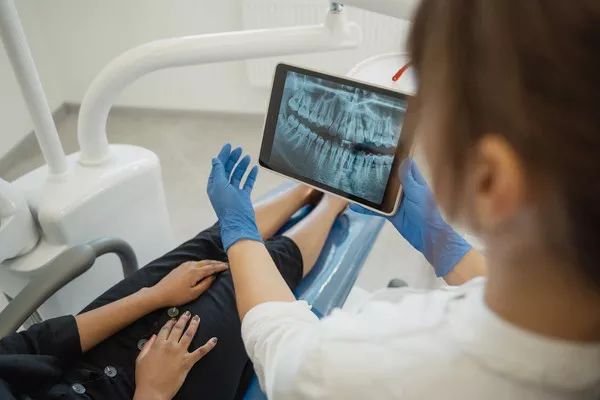Yellow teeth can be a cause of concern for many individuals seeking a bright, white smile. While it’s natural to desire quick results, it’s important to understand that the process of removing yellow stains from teeth varies depending on several factors. In this article, we will explore the various aspects that contribute to the timeframe required to remove yellow teeth. By understanding these factors and adopting effective strategies, you can achieve a whiter smile and regain your confidence.
I. Determining Factors
Several factors play a significant role in determining how long it takes to remove yellow teeth:
Severity of Stains:
The intensity and depth of tooth discoloration influence the time required for treatment. Superficial stains caused by external factors like food or beverages tend to respond faster to whitening treatments compared to deeper intrinsic stains that affect the inner layers of the teeth.
Whitening Method Used:
Different whitening methods yield varying results and have different timelines. Over-the-counter products generally require more time compared to professional treatments performed by dentists, which are often quicker and more effective.
Consistency and Compliance:
Following the recommended treatment plan consistently and as directed is crucial for achieving desired results. Failure to adhere to instructions or skipping treatments may prolong the whitening process.
Underlying Dental Conditions:
Certain dental conditions or oral health issues like tooth decay, gum disease, or enamel erosion can impact the effectiveness and duration of whitening treatments. Addressing these conditions before pursuing teeth whitening is essential for optimal outcomes.
II. Temporary vs. Permanent Solutions
When it comes to removing yellow teeth, it’s important to distinguish between temporary and permanent solutions:
Temporary Solutions:
a. Whitening Toothpaste: Whitening toothpaste typically contains mild abrasives that help remove surface stains over time. However, the results may vary, and it may take several weeks of consistent use to notice a difference.
b. Whitening Strips: Over-the-counter whitening strips are thin, flexible plastic strips coated with a peroxide-based gel. They are applied directly to the teeth for a specified period daily, usually for a few weeks, to gradually lighten stains.
Professional Solutions:
a. In-Office Teeth Whitening: Performed by dentists, in-office whitening procedures involve the application of stronger bleaching agents combined with specialized light or heat sources. This method can provide noticeable results within a single visit, typically taking around one to two hours.
b. At-Home Whitening Kits: Dentist-prescribed at-home whitening kits involve the use of custom-fitted trays and professional-grade bleaching gels. The treatment is generally performed for a specific duration each day over a few weeks, offering visible improvement in tooth color.
III. Timeframe for Yellow Teeth Removal
The timeframe for removing yellow teeth varies depending on the chosen method and individual circumstances. Here’s a breakdown of expected timelines for different approaches:
Over-the-Counter Products:
a. Whitening Toothpaste: Results from using whitening toothpaste can be gradual, requiring several weeks or even months of consistent use to see noticeable changes.
b. Whitening Strips: Over-the-counter whitening strips often require daily use for a specified period, typically ranging from two to four weeks. Visible improvements may start to appear within the first week, but optimal results are usually achieved after completing the full treatment cycle.
Professional Treatments:
a. In-Office Teeth Whitening: In-office whitening treatments can deliver significant results within a single session, lasting approximately one to two hours. However, multiple sessions may be required for more severe or stubborn tooth discoloration.
b. At-Home Whitening Kits: Dentist-prescribed at-home whitening kits typically involve wearing custom-fitted trays with bleaching gel for a specific duration each day over a period of one to four weeks. Results are usually noticeable within the first week, with optimal outcomes achieved by the end of the treatment cycle.
Deep Intrinsic Stains and Complex Cases:
Some individuals may have deep intrinsic stains or complex dental conditions that require additional time and specialized treatments to achieve desired results. In such cases, it is essential to consult with a qualified dentist who can assess the situation and recommend suitable options.
IV. Maintaining Whitening Results
Once you have successfully removed yellow stains from your teeth, it’s important to take steps to maintain your newly acquired whiteness. Here are some tips to help preserve the results:
Practice Good Oral Hygiene:
Brush your teeth at least twice a day using a soft-bristle toothbrush and fluoride toothpaste. Also, floss daily and rinse with an antimicrobial mouthwash to remove plaque and prevent staining.
Limit Staining Foods and Beverages:
Reduce your consumption of coffee, tea, red wine, soda, berries, soy sauce, curry, and other pigmented or acidic foods and beverages that can cause staining. If you do consume them, use a straw to minimize contact with your teeth.
Drink Plenty of Water:
Drinking water throughout the day helps rinse away food particles and reduce the buildup of staining substances on your teeth. It also promotes saliva production, which aids in maintaining oral health.
Quit Smoking and Tobacco Use:
Tobacco products, including cigarettes and chewing tobacco, can cause severe tooth discoloration. Quitting or avoiding tobacco will not only help maintain your whitened teeth but also improve your overall oral and general health.
Schedule Regular Dental Check-ups:
Visit your dentist for regular check-ups and cleanings. Professional dental cleanings can remove surface stains and plaque that may accumulate over time, helping to keep your teeth looking white and healthy.
Touch-up Whitening Treatments:
Depending on the whitening method used, you may need occasional touch-up treatments to maintain your desired level of whiteness. Consult with your dentist to determine the frequency and appropriate products for touch-up whitening.
Consider Lifestyle Changes:
Certain habits, such as nail-biting or using your teeth to open packages, can chip or damage your teeth, making them more prone to staining. Avoid these habits to protect your teeth and maintain their whiteness.
Use a Whitening Toothpaste:
Incorporate a whitening toothpaste into your oral care routine. Look for toothpaste with the ADA seal of approval, which indicates that it has met the standards for safety and effectiveness in removing surface stains.
Remember, individual results may vary, and maintaining whitened teeth requires continued effort and consistency. By following these tips and practicing good oral hygiene, you can extend the lifespan of your bright, white smile and enjoy the confidence that comes with it.
Related Topics:































